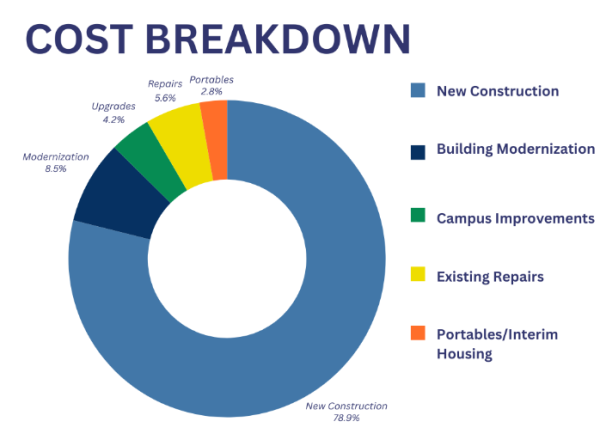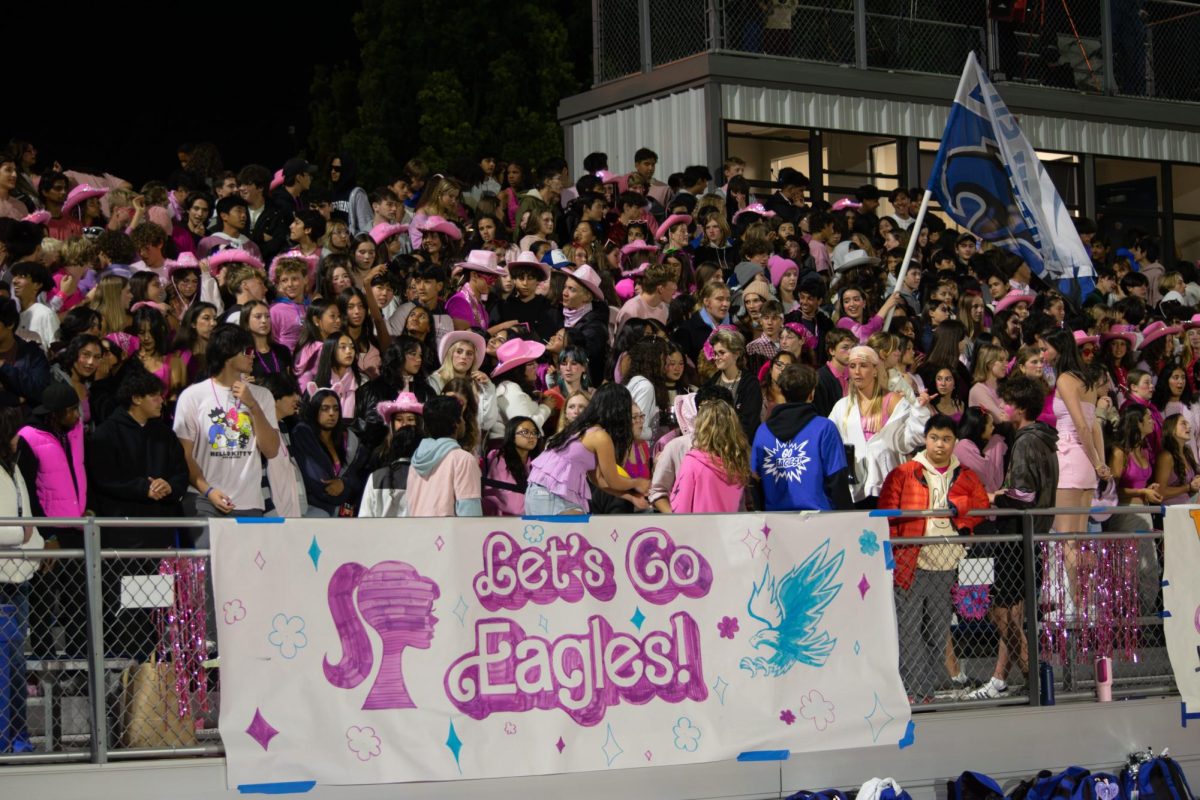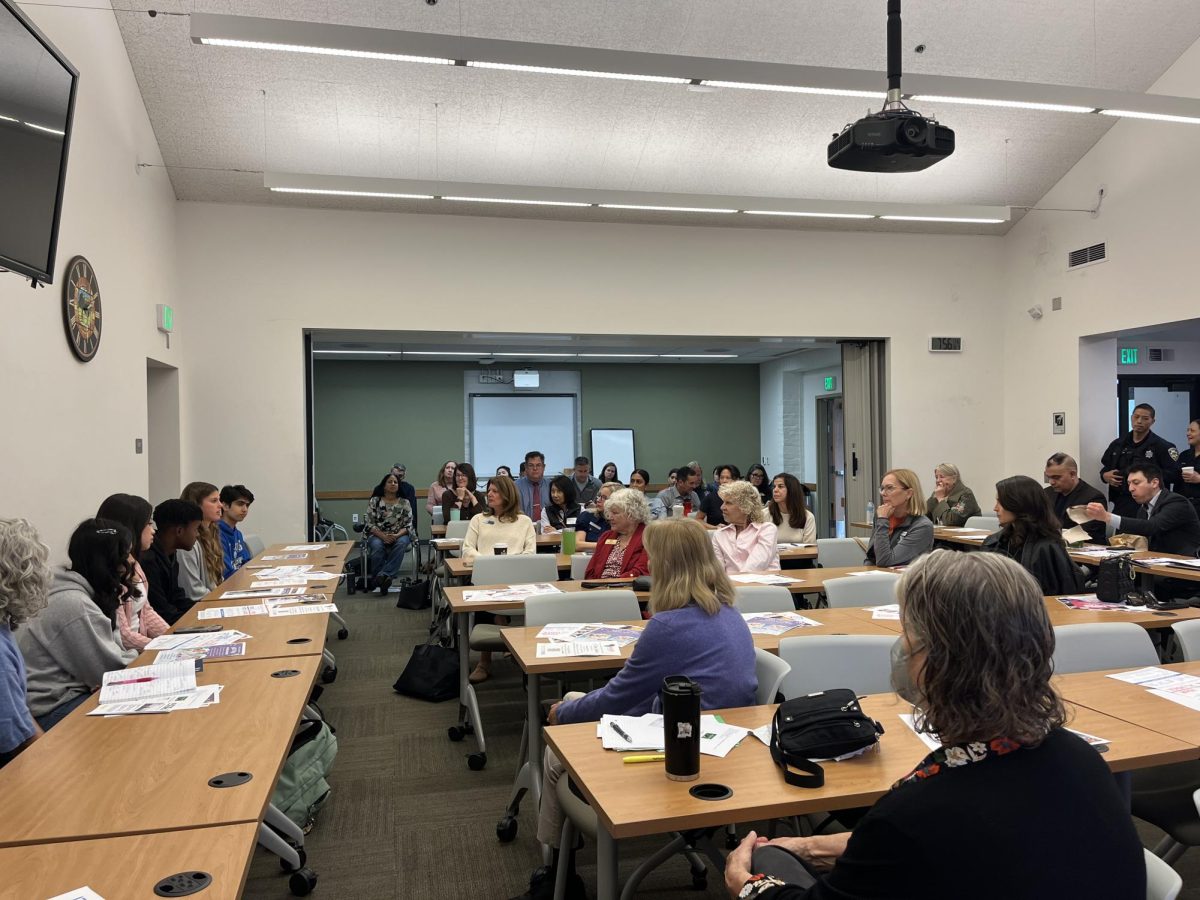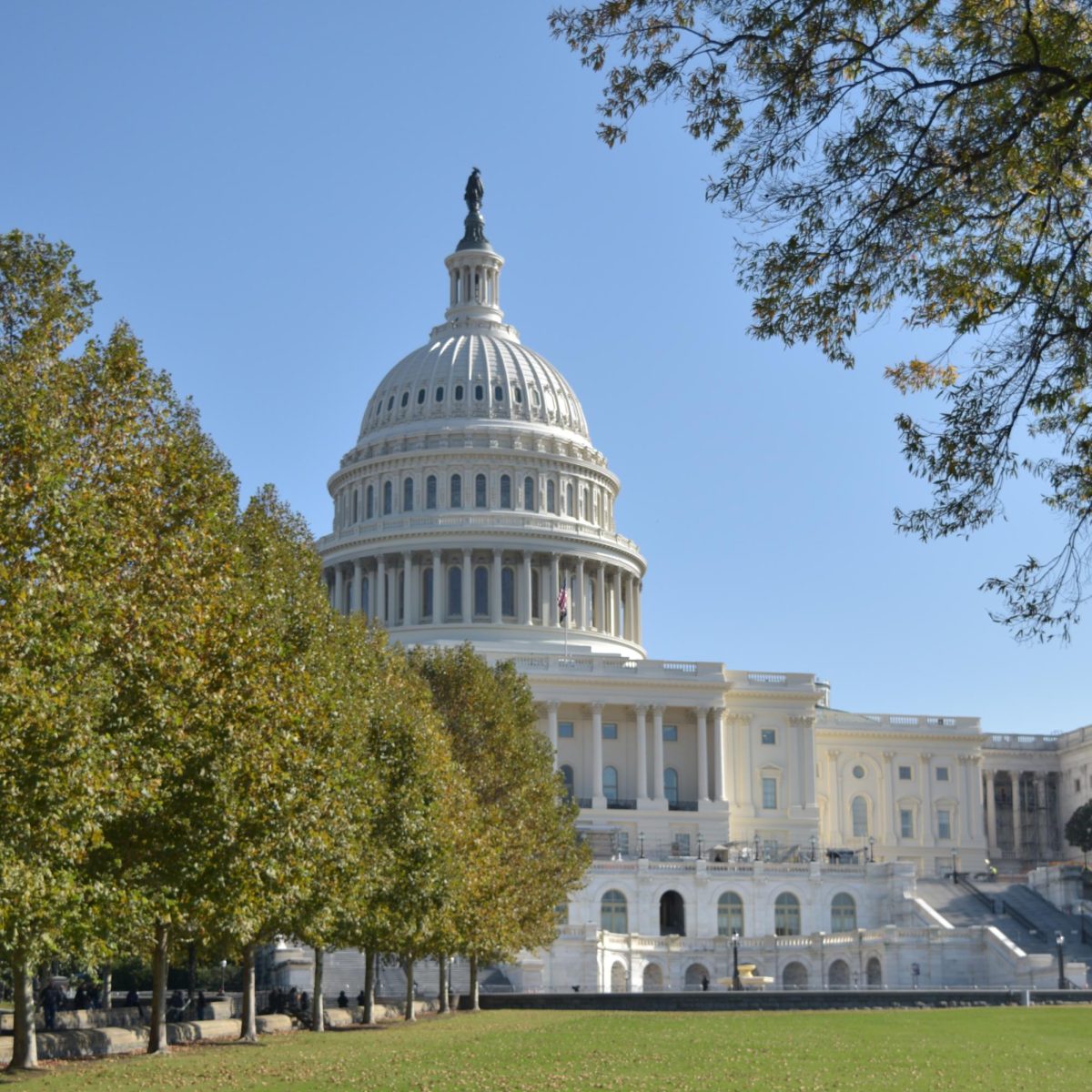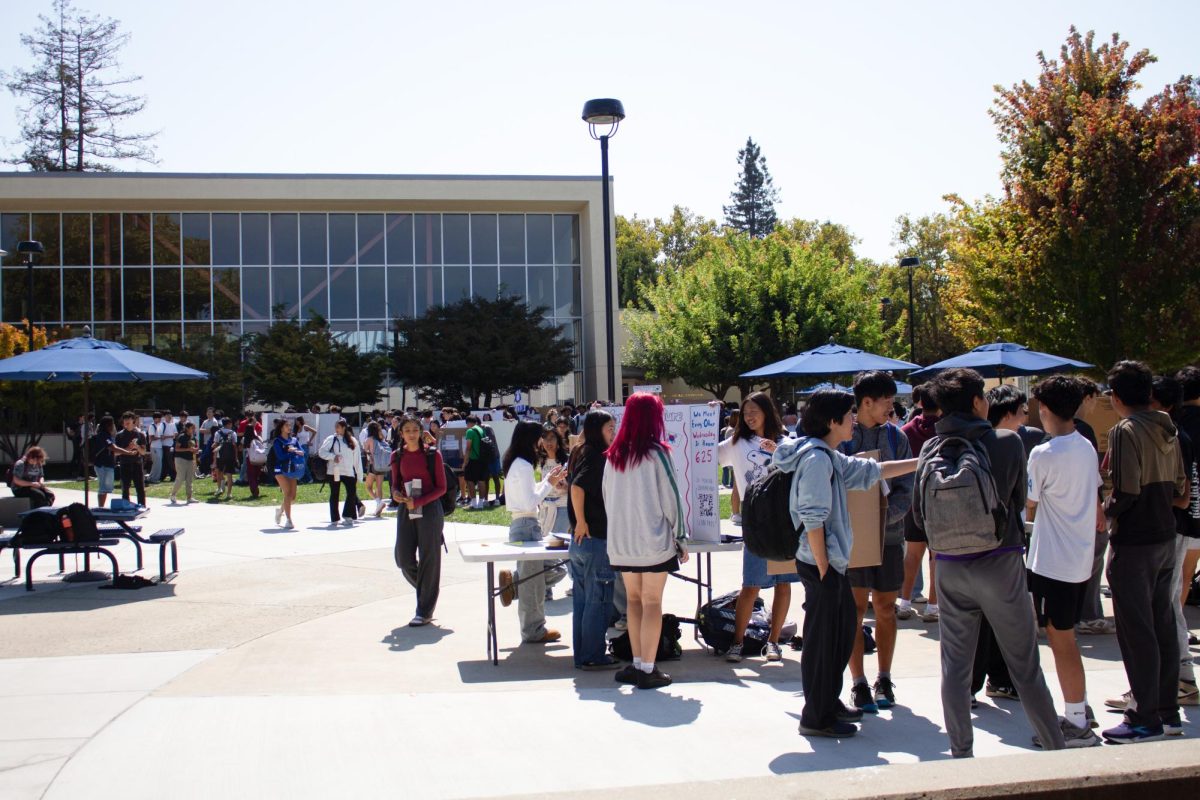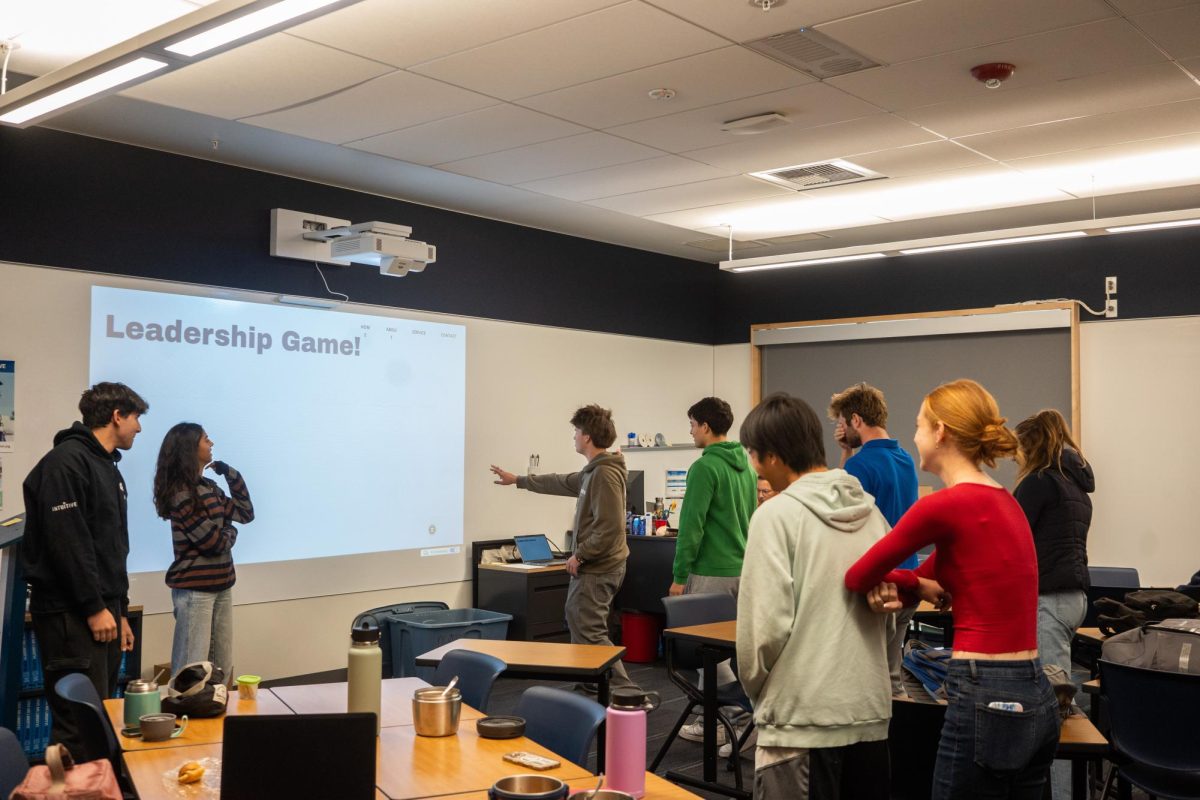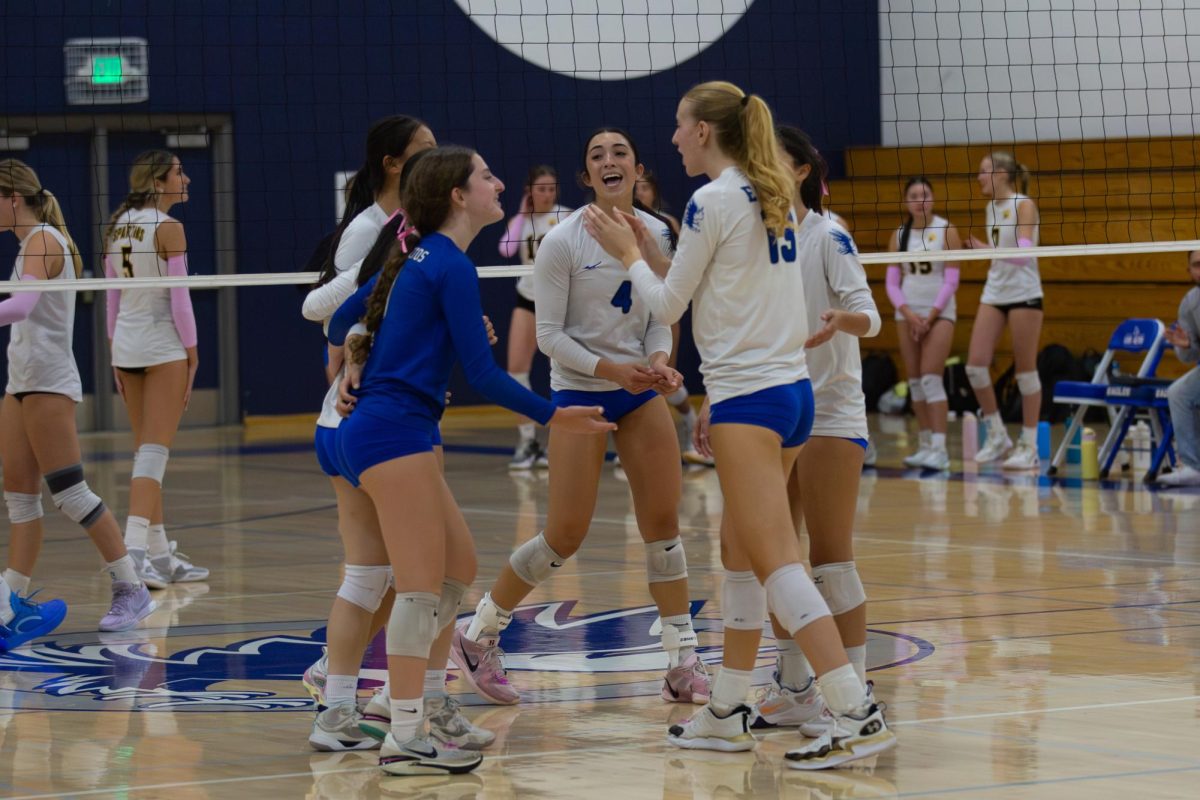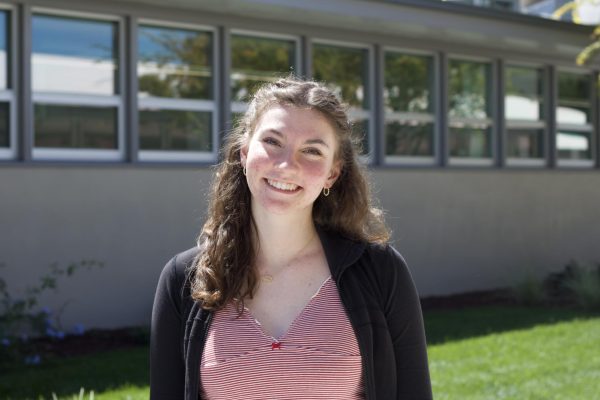Construction noise and closed-off sections of campus are just a few of the new changes students grew accustomed to in the past few years. With new buildings across campus, construction has spanned the entire high school careers of all current students. Despite the long journey of construction projects, the end is in sight. Here’s an update of where we’re at so far.
In 2019, the Mountain View-Los Altos (MVLA) School District began construction across its campuses.
A large majority of the construction is already completed. It has brought the new 600s Wing, Auxiliary Gym, and most recently the new Student Services Building.
“I had thought that the construction would be done when we finished [the student services building],” assistant principal Derek Miyahara said. “I just roll with it because it’s part of what I do.”
Currently, classroom renovation is ongoing in the 400s and 500s wings, which is predicted to end this summer. Next year, construction will move on to the cafeteria and kitchen, and eventually the 200s and 300s wings.
After this cycle of construction ends, the school board doesn’t foresee any more large projects any time soon.
“I don’t know that there’s that same appetite to constantly be doing new construction,” Assistant Superintendent of Business Services Mathiesen said.
The goal of these projects was to improve campuses so they could accommodate increasing enrollments and refurbish aging facilities. While most agree there is a need for campus updates, many don’t understand how these are being funded.
“I worked really closely with our superintendent, Assistant Superintendent and a lot of other people in the district office, and I still have never really heard anything about expenses,” Associated Student Body President senior Lauren Holm said.
The 44-page MVLA Facilities Master Plan details the budget for all the construction happening throughout the district. Money to fund the construction comes from a bond, which is like a loan from the government. This means that costs were originally calculated for the entirety of the project. Los Altos taxpayers voted on whether they would be willing to pay slightly higher taxes over 30 years to repay the loan, and after it was approved the MVLA High School District received a bond from the government.
The total bond was for $295 million to distribute between all campuses and construction sites.
A common misconception is that the money is coming directly from the district’s general fund, but the bond allots money specifically for construction costs which is not allowed to be redistributed to other projects. This means that even though old copies of “Romeo and Juliet” from freshman year English may need to be replaced, the district can’t take the construction money to put into this task.
LAHS, which didn’t need many new facilities and classrooms, received a little under half of the money. The estimate totaled between $102 million and $112 million, considering construction and hidden costs, such as temporary classrooms and portables.
Each of these projects individually cost several million dollars. The Auxiliary Gym was over $11 million, the 600’s wing cost $40 million, and the new Student Services and Student Union Building was about $30 million.
Meanwhile, MVHS, which requires more new classrooms because of their increase in enrollment, gets more of the bond money with an estimate totaling between $118 million and $129 million. The construction at MVHS will result in new classrooms, updated facilities, a new Student Services Building, and renovations similar to those at LAHS.
Additionally, Freestyle Academy is getting updated facilities. Freestyle Academy is a program focused on art, design, and technology. It allows students who are interested in moving into professions involving animation, film, and design to take specialized classes designed for these areas.
The Freestyle Academy campus is located behind the MVLA District Office in portables dating back to 2006. The old portables are not sufficient to support the high level of technology that Freestyle Academy requires for their classes and must be updated.
While construction is a necessity to keep the schools safe and current, it creates challenges for students and staff as large portions of campus are closed off.
“For a lot of students here, construction has become a way of life,” Miyahara said. “It’s caused us to change things and students have been remarkably resilient.”
Although inconvenient, the sections of campus that are closed ensure safety. This provides the workers with enough space to avoid injuries to anyone passing by. It is crucial to maintain this extra space with students and staff walking through campus, past construction, daily.
“I’m not immune to or unaware of [student concerns],” Mathiesen said. “But the last thing we want is an accident or somebody getting hurt in the area, so it’s safer to keep people out of it.”
With construction progressing, many students are looking forward to a complete campus.
“In my four years, we’ve had construction every year except for my freshman year,” Lauren said. “It’s a little bit unfortunate, but it’ll be really nice when the campus is all done.”
